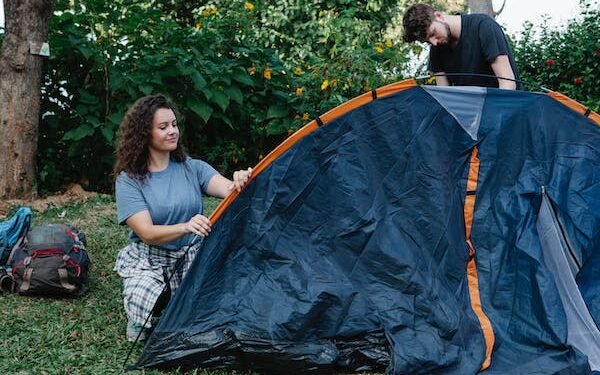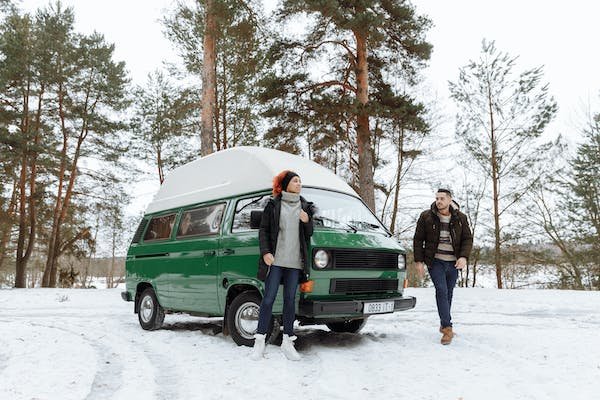How to Insulate a Tent for Winter Camping Guide to Staying Warm in the Cold

Winter camping can be an exhilarating experience, offering a unique opportunity to connect with nature in its serene, snow-covered beauty. However, the cold temperatures can pose a significant challenge to campers, making it essential to insulate your tent effectively. In this comprehensive guide, we’ll explore 10 practical ways to how to insulate a tent for winter camping, ensuring a cozy and comfortable outdoor adventure.
1.Invest in a High-Quality Four-Season Tent

The foundation of a warm winter camping experience starts with the right tent. Four-season tents are designed to withstand harsh weather conditions, including snow, strong winds, and low temperatures. These tents typically feature sturdier materials and reinforced poles, providing better insulation than standard three-season tents.
2.Choose an Appropriate Tent Location

Selecting the right campsite can significantly impact your tent’s insulation. Look for a spot that is sheltered from the wind, preferably behind a natural windbreak like trees or a hill. Avoid low-lying areas where cold air can accumulate, and position your tent to maximize exposure to the sun during the day.
3.Use a Ground Tarp or Footprint

Placing a ground tarp or footprint beneath your tent serves as an additional layer of insulation. This barrier helps prevent cold from seeping through the tent floor and provides protection against moisture. Ensure the tarp is cut to the tent’s dimensions to avoid water pooling between the layers.
4.Upgrade Your Sleeping Bag
A high-quality, cold-weather sleeping bag is crucial for staying warm during winter camping. Opt for a bag with a lower temperature rating than you expect to encounter. Consider a mummy-style bag, as it provides better heat retention by conforming closely to your body shape, minimizing the airspace inside.
5.Add a Thermal Sleeping Pad
Underneath your sleeping bag, place a thermal sleeping pad to insulate yourself from the cold ground. The pad acts as a barrier, preventing heat loss and providing a more comfortable sleeping surface. Choose pads with higher R-values for better insulation.
6.Layer Up with Insulating Clothing

Wearing layers of insulating clothing is essential for maintaining body heat inside the tent. Thermal underwear, fleece jackets, and down-filled vests are excellent choices. Avoid wearing cotton, as it tends to retain moisture, which can make you feel colder.
7.Seal Tent Gaps with Draft Stoppers
To prevent cold drafts from entering your tent, use draft stoppers to seal gaps around zippers, doors, and windows. Drafts can significantly impact the interior temperature, so take the time to secure these areas properly. Consider using draft stoppers specifically designed for camping gear.
8.Hang Thermal Curtains Inside the Tent
Create an additional barrier against the cold by hanging thermal curtains or blankets inside your tent. This DIY insulation method helps trap warm air and prevents heat loss. Ensure that the materials used are fire-retardant and safe for indoor use.
9.Utilize Hot Water Bottles or Heating Packs

Before bedtime, fill hot water bottles or heating packs with warm water and place them inside your sleeping bag. This simple trick can provide localized warmth throughout the night. Just make sure the containers are securely sealed to avoid any leaks.
10.Cook Inside the Tent

If conditions allow, consider cooking inside the tent using a safe, well-ventilated camping stove. Cooking generates heat, and the warmth produced can contribute to raising the interior temperature. Always prioritize safety and proper ventilation to avoid carbon monoxide buildup.
Keep reading here:How to be a solo traveller and enjoy it: complete guide
Conclusion
Winter camping can be an unforgettable adventure with the right preparation and insulation techniques. By investing in quality gear, choosing a suitable campsite, and implementing these ten strategies on how to insulate a tent for winter camping, you can create a warm and cozy haven amidst the cold wilderness. Stay warm, stay safe, and enjoy the beauty of winter in the great outdoors.
Keep reading har : Essential Camping Supplies List – Guide for First-Time Campers
FAQ
1.Why is insulation important for winter camping tents?
Insulation is crucial for winter camping tents because it helps retain heat, keeping the interior warm and comfortable. In cold weather, proper insulation prevents heat loss, creating a cozy environment for a better camping experience.
2. Can I use a three-season tent for winter camping, or do I need a four-season tent?
While three-season tents are suitable for milder weather conditions, they may not provide adequate insulation for winter camping. Four-season tents are specifically designed to withstand colder temperatures, heavy snow loads, and strong winds, making them a safer and more comfortable choice for winter adventures.
3.What's the importance of a thermal sleeping pad in winter camping?
A thermal sleeping pad is essential for winter camping as it acts as a barrier between your body and the cold ground. It prevents heat loss, insulating you from the chilly surface and ensuring a warmer and more restful night’s sleep.
4.How do I prevent condensation inside my tent while insulating it for winter?
Condensation can be a challenge in winter camping. To minimize it, ensure proper ventilation by partially opening windows or vents. Additionally, avoid bringing wet gear into the tent and consider using breathable insulation materials to regulate moisture.
5.Are there any safety concerns with cooking inside the tent for added warmth?
While cooking inside the tent can provide additional warmth, it comes with potential safety risks. Always use a well-ventilated camping stove, follow safety guidelines, and never leave the stove unattended. Carbon monoxide detectors are also recommended to ensure safe indoor air quality.




